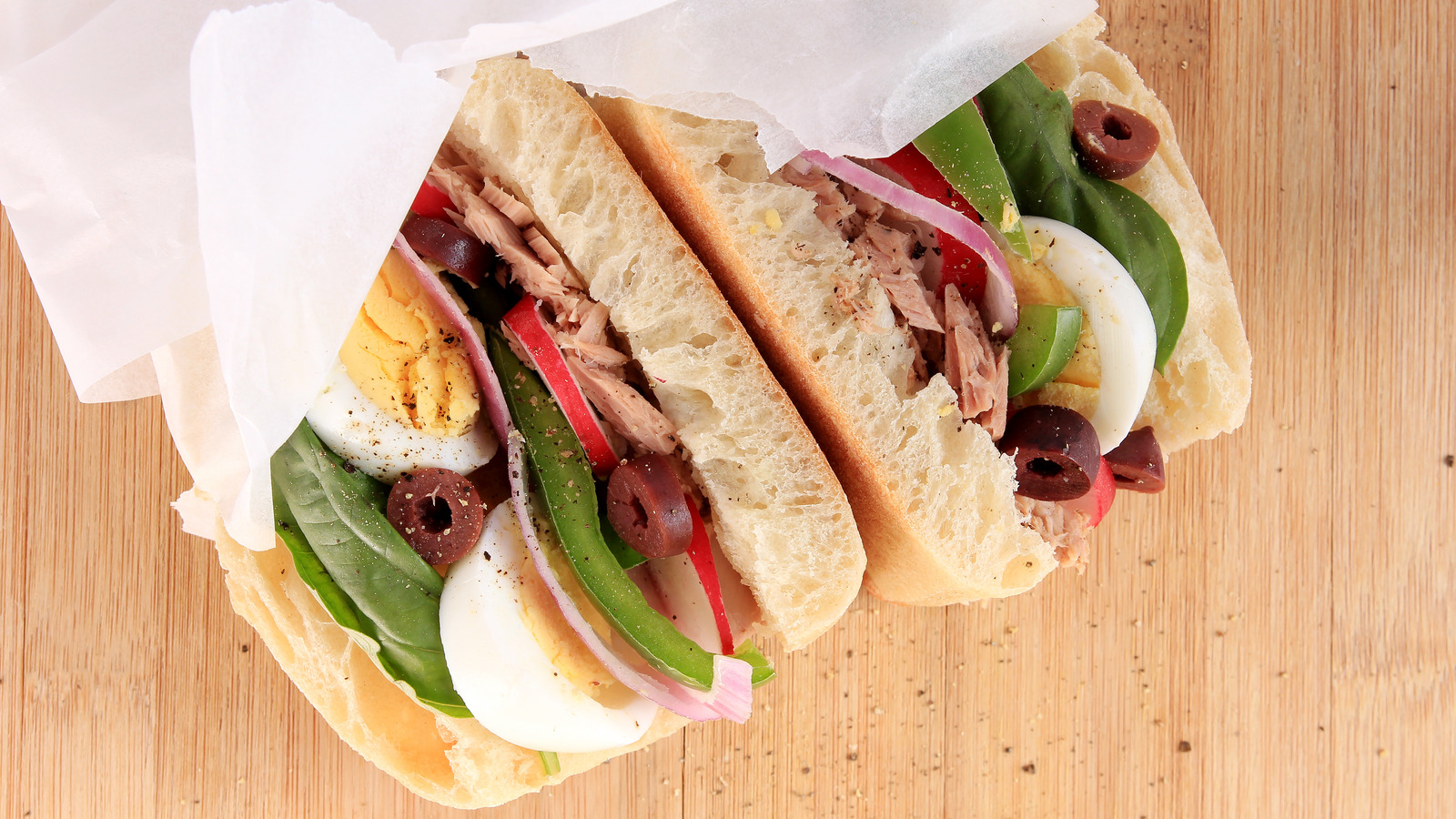
The Chaotic French Sandwich That Gets Super Soggy On Purpose – The Daily Meal
When it comes to sandwiches, the texture of the bread usually complements the ingredients. A peanut butter and jelly made with a crusty baguette, for example, is nowhere near as satisfying as one made with plain white bread. Pastrami on any other type of bread besides rye doesn’t quite taste the same, and neither does a Cubano made with, say, a ciabatta instead of pan Cubano. Some breads are interchangeable — you can use wheat instead of white a lot of times — but in many cases the texture tends to make a noticeable difference.
With any sandwich though, most people would probably agree that sogginess is not a texture you generally want to aim for. It normally happens by accident, like when you use lettuce that’s too wet, add too many saucy condiments, or simply let it sit in a lunch box for too long. There’s one sandwich however that’s designed to get soggy. It’s called a pan bagnat, and its name literally means “bathed bread” in Provencal dialect.
What is a pan bagnat?
 evantravels/Shutterstock
evantravels/Shutterstock
Go to any sandwich shop or eatery in Provence, and you’re bound to find pan bagnat. A staple of picnic lunches, this classic French sandwich contains all the mix-ins typically included in a salad Niçoise. Another product of Southern France, a Niçoise salad is made up of 11 ingredients at minimum, including lettuce, green peppers, green beans, tomatoes, potatoes, olive oil, olives, basil, tuna, anchovies, and hard boiled eggs. Aside from the inclusion of lettuce and the fact that the ingredients are sandwiched between a halved baguette, a pan bagnat isn’t much different from a Niçoise salad.
To assemble a pan bagnat, you start by slicing your baguette and scooping out some of the bread on the inside. Then, you drizzle on some olive oil and layer on the ingredients. Some recipes also say you can just mix all the ingredients together like a salad, and spoon it onto the bread. You might be tempted to take a bite after making the sandwich, but pan bagnats are actually better if you eat it several hours later or the next day.
What makes a pan bagnat soggy?
 photokin/Shutterstock
photokin/Shutterstock
While pan bagnats do include olive oil (or vinaigrette, depending on the recipe you use), the sogginess doesn’t just come from just one ingredient. It also comes from the natural moisture of the sandwich toppings, mainly the canned anchovies and tuna. While you drain the excess oil or liquid when making a tuna sandwich, you don’t do the same for a pan bagnat.
To ensure the bread properly soaks up the juices and oils, pan bagnats are meant to sit overnight. In addition to wrapping it in plastic and leaving it in the fridge, a cast iron or other heavy object is often placed on top of it. By the next morning, the sandwich will be perfectly soggy, or more accurately, “bathed.” Just keep in mind that this process only works if you use a baguette or similar type of artisan bread. Otherwise, your pan bagnat will turn mushy, especially if you plan to weigh it down with a cast iron.




































































